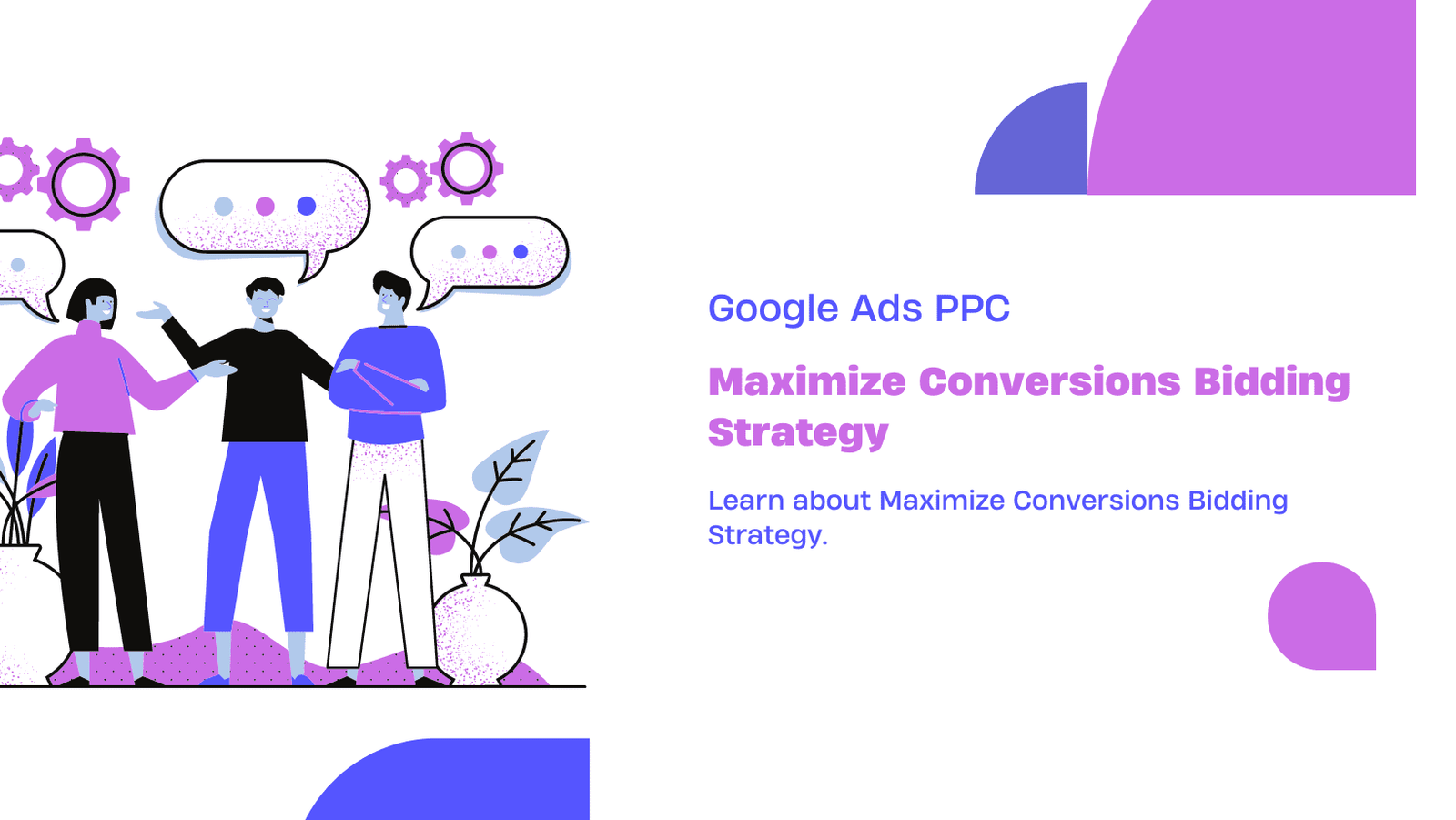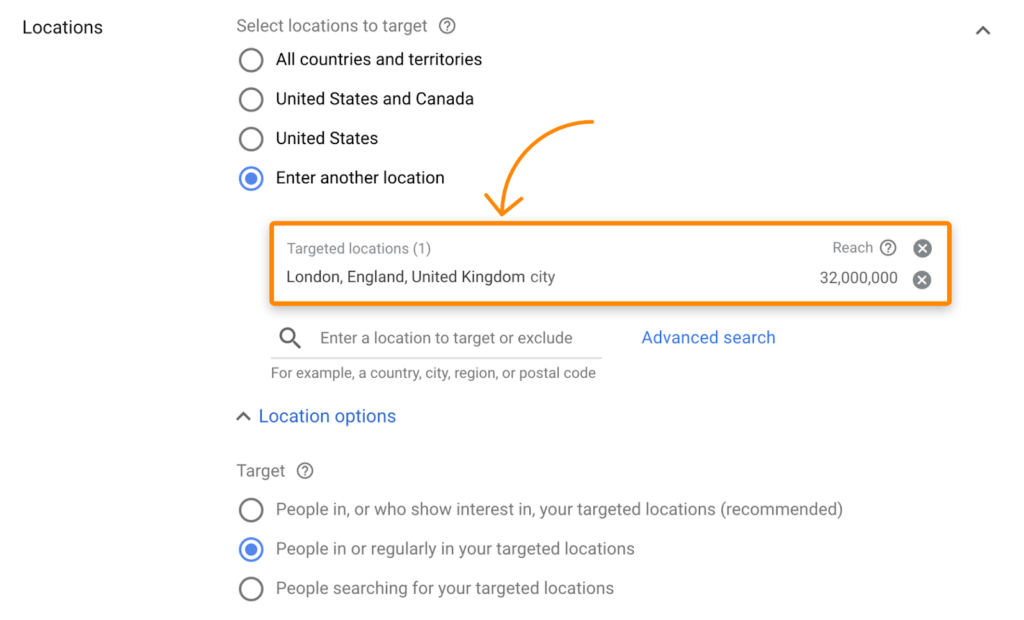Address
Suncity P&T Colony, Rajendra Nagar, Hyderabad.
Work Hours
Monday to Friday: 9 Am - 4 Pm EST
Saturday: 10 Am - 2 Pm EST
Address
Suncity P&T Colony, Rajendra Nagar, Hyderabad.
Work Hours
Monday to Friday: 9 Am - 4 Pm EST
Saturday: 10 Am - 2 Pm EST

Maximizing conversions is a common goal for businesses that are running pay-per-click (PPC) campaigns on platforms like Google Ads. One way to achieve this goal is by using a maximize conversions bidding strategy, which is a type of automated bidding strategy that is designed to help businesses drive as many conversions as possible within their budget.
Maximize conversions is a smart bidding strategy offered by Google Ads that can help businesses to increase their conversions and grow their customer base. This strategy uses advanced machine learning algorithms to analyze the performance of your ads and automatically adjust bids in real-time to optimize for conversions. It allows for a more hands-off approach to bid management, which can save time and reduce the need for manual optimization.
One of the main advantages of the maximize conversions strategy is that it’s ideal for businesses that want to see a lot of results quickly. It’s especially useful for businesses with high-volume, high-conversion campaigns, as it optimizes your budget to get the most conversions possible. Additionally, it’s really effective in handling cross-device conversions, it makes use of machine learning to accurately track a user’s journey across multiple devices, and adjust bids accordingly to optimize conversion chances at each stage.
When a business sets up a maximize conversions bidding strategy, they will need to set a target cost-per-acquisition (CPA) and a daily budget. The target CPA is the average amount that the business is willing to pay for a conversion, and the daily budget is the maximum amount that the business is willing to spend on their campaign each day.

Once these parameters are set, the maximize conversions bidding strategy will automatically adjust the bid amount for each auction based on the likelihood that the ad will result in a conversion. If an ad is more likely to result in a conversion, the bid amount will be increased in order to try and win the auction and drive more conversions. If an ad is less likely to result in a conversion, the bid amount will be decreased.

The algorithm used by the Maximize Conversions strategy takes into account a variety of factors to determine the optimal bids for your campaigns. Some of the key factors that the algorithm considers include:
In addition to these factors, the algorithm also considers other data such as ad relevance, landing page experience, and historical performance data to determine the best bid amount for each ad group or campaign. The goal is to find the optimal bid that will maximize the number of conversions possible within the set budget. As the algorithm is using machine learning, it will continue to learn and adapt to improve the performance over time.
Maximize Conversions bidding strategy differs from other bidding strategies in a few key ways:
All these strategies can help businesses achieve different goals and work differently, it’s important to evaluate and compare these strategies based on your business goals and objectives, and select the one that suits your needs best.
Setting up a Maximize Conversions bid strategy in Google Ads is a relatively simple process that can be broken down into the following steps:

It’s worth noting that it may take some time (upto 14 days) for the algorithm to optimize the bids, and you should wait for a couple of weeks ideally to see the results of the strategy.
The Maximize Conversions bidding strategy in Google Ads is a powerful tool that can help businesses to achieve their goals by using automated bid adjustments. These adjustments are made in real-time by advanced machine learning algorithms that take into account a variety of factors such as conversion history, device, location, time of day, and demographics. The goal is to find the optimal bid amount for each ad group or campaign that will result in the most conversions possible within the set budget.
One of the main advantages of automated bid adjustments is the ability to handle cross-device conversions effectively. The algorithm can track user journeys across multiple devices and adjust bids to optimize for conversions at each stage. This helps to ensure that your ads are reaching the right audience at the right time, increasing the chances of conversion.
The algorithm also considers other important data such as ad relevance, landing page experience, and historical performance data, which helps to fine-tune the bids to achieve the most conversions. This makes the process of bid management efficient and hassle-free, and enables businesses to focus on their core operations.
While automated bid adjustments are designed to optimize bids for conversions, it’s still important to monitor campaign performance regularly and make adjustments as necessary. By doing this, businesses can ensure that the campaign is aligned with their goals and objectives. And also, setting realistic conversion goals, and checking progress regularly, helps in achieving the best results out of this strategy.
One of the key advantages of using the Maximize Conversions bidding strategy in Google Ads is the reduced need for manual bid management. Because the algorithm automatically adjusts bids in real-time based on conversion history, device, location, time of day, and other factors, businesses are able to spend less time and effort on bid management and more time on other aspects of their operations.
Manual bid management can be time-consuming and requires a significant amount of expertise to do it effectively. With the Maximize Conversions strategy, businesses are able to rely on the algorithm to make the optimal bid adjustments, which can save time and resources.
Additionally, using the Maximize Conversions strategy reduces the risk of human error. Manually adjusting bids can be tricky and even small mistakes can have a big impact on performance. With automated bid adjustments, businesses can feel confident that the algorithm is making the best bid adjustments based on data analysis.
Overall, the reduced need for manual bid management is a significant advantage of the Maximize Conversions strategy. It allows businesses to focus on other important aspects of their operations while ensuring that their bids are being optimized for conversions.

The Maximize Conversions bidding strategy in Google Ads is designed to help businesses achieve as many conversions as possible within their daily budget. When setting up the strategy, businesses have the option to set a target cost-per-conversion, which is the amount they are willing to pay for each conversion.
Once the budget is set, the algorithm uses advanced machine learning algorithms to analyze the performance of the ads and adjust bids in real-time to optimize for conversions. The algorithm takes into account various factors such as conversion history, device, location, time of day, and demographics to adjust bids in real-time. It also considers other data such as ad relevance, landing page experience, and historical performance data to determine the optimal bid amount for each ad group or campaign.
The algorithm’s goal is to find the optimal bid amount for each ad group or campaign that will result in the most conversions possible within the set budget. It does this by adjusting bids for ads and keywords that have a higher likelihood of converting, and by bidding less for ads and keywords that have a lower likelihood of converting.
It’s worth noting that, while the Maximize Conversions strategy is designed to achieve as many conversions as possible within the daily budget, it’s important to monitor campaign performance regularly, and make adjustments as necessary to ensure that the campaign is aligned with your business goals and objectives. It’s also important to set realistic conversion goals and check progress regularly, as increased cost per conversion can also be a side-effect of the strategy.

When it comes to location targeting, the algorithm uses data such as location history and IP addresses to determine where potential customers are located. It then adjusts bids for ads and keywords that are more likely to convert in those specific locations. This helps to ensure that your ads are reaching the right audience in the right location, increasing the chances of conversion.
Demographics also play a role in the Maximize Conversions bidding strategy. The algorithm uses data such as age, gender, and interests to understand who the potential customers are, and adjusts bids accordingly. For example, if the algorithm sees that a certain ad or keyword is generating a high number of conversions among a certain age group or gender, it will adjust the bid to increase the chances of conversion among that demographic.
By taking into account location targeting and demographics, the Maximize Conversions bidding strategy is able to optimize bids for conversions in a more targeted way. This can lead to improved performance and increased return on investment.
In conclusion, the Maximize Conversions bidding strategy in Google Ads is able to take into account location targeting and demographics to optimize bids for conversions. By doing so, it can help businesses reach the right audience in the right location, increase conversions and grow their customer base.

Tracking conversions accurately is one of the key best practices when using the Maximize Conversions bidding strategy in Google Ads. Accurate conversion tracking is essential to understanding the performance of your campaign and making informed decisions.
To set up conversion tracking, you need to add a conversion tracking tag to your website. This tag will track user actions on your website such as form submissions, phone calls, and purchase completions. It’s important to note that all the important actions that you would like to track as conversions should be included in the tracking setup.
It’s also important to verify that the conversion tracking is working correctly. This can be done by testing the tracking code on different pages of your website and by reviewing the conversion data in your Google Ads account. By regularly checking the data, you’ll be able to ensure that your conversion tracking is accurate and that all the relevant actions on your website are being tracked as conversions.
In addition, regularly reviewing your conversion data can also help identify any potential issues with your website, such as a high bounce rate or a low number of conversions. By identifying these issues, you can take steps to improve your website’s performance and optimize your campaign.
When setting conversion goals, it’s important to consider your target cost-per-conversion and budget for the campaign. Based on this, you should set a realistic goal for the number of conversions you want to achieve. It’s important to keep in mind that the Maximize Conversions strategy is focused on maximizing conversions, but it also has an impact on costs, so it’s important to consider this balance.
It’s also important to consider the historical performance data, such as conversion rates, click-through rates, and cost-per-conversion. This will give you an idea of what is possible and a good starting point to set realistic conversion goals.
Additionally, It’s important to regularly monitor your campaign’s performance and adjust your goals as necessary. For example, if your campaign is consistently meeting or exceeding your conversion goals, you may want to set higher goals. On the other hand, if your campaign is not meeting your goals, you may need to adjust your goals to something more realistic.
In conclusion, setting realistic conversion goals is a crucial best practice when using the Maximize Conversions bidding strategy. It’s important to consider your target cost-per-conversion, budget, and historical performance data when setting conversion goals and regularly monitor performance to make any adjustments as necessary. By keeping realistic goals and monitoring progress, you can keep your campaign aligned with your business objectives and achieve better performance.
Comments are closed.
[…] of the main goals of digital marketing is to maximize conversions. This means increasing the number of visitors to a website who take the desired action. But is it […]
[…] the right bid strategy, budget, and targeting options To get the most out of your search campaigns, you’ll want to […]
[…] maximum CPC bids for individual keywords or ad groups, while automated bidding strategies like maximize conversions use machine learning to set bids based on advertiser goals and historical performance. Smart […]